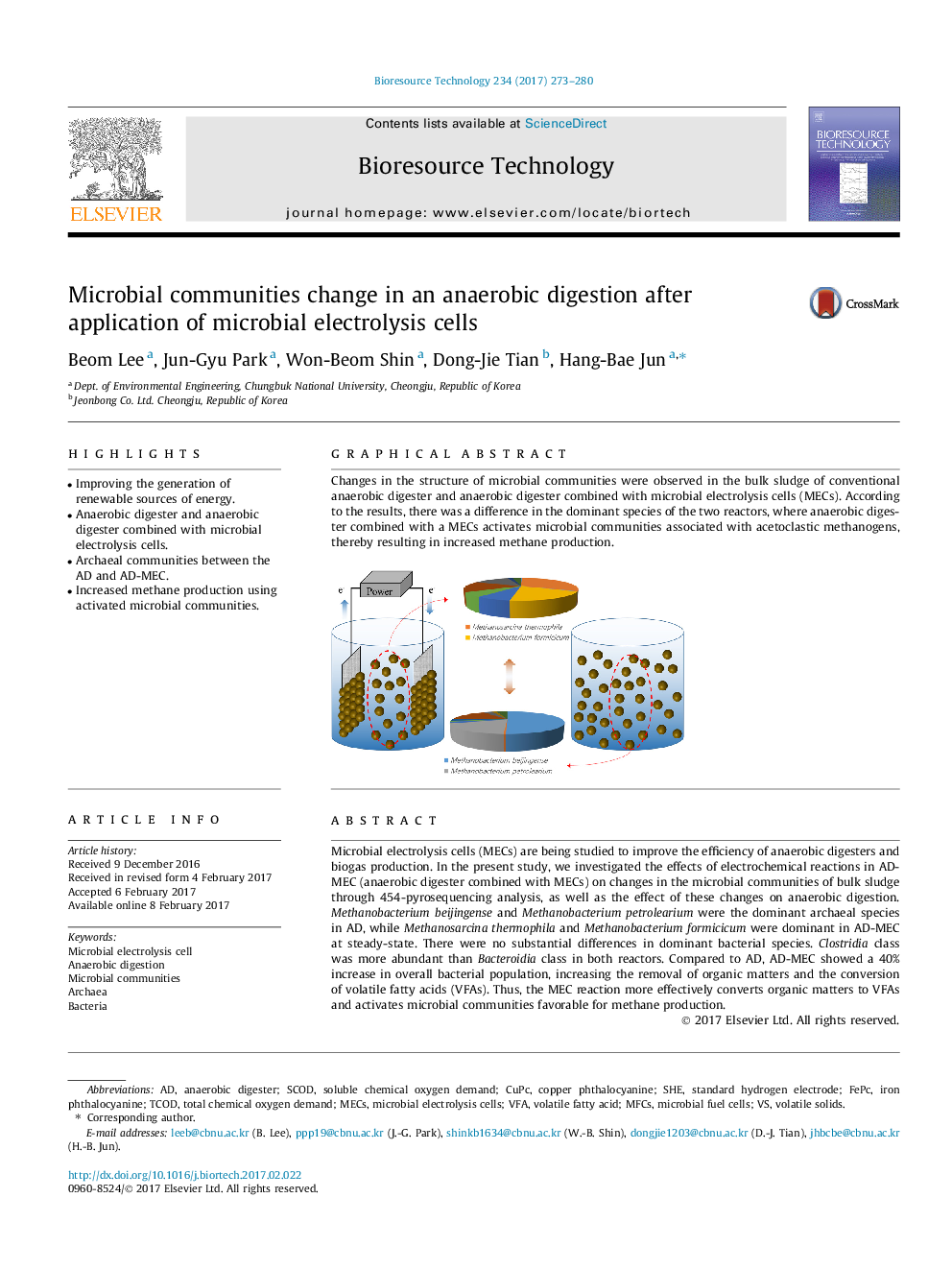| Article ID | Journal | Published Year | Pages | File Type |
|---|---|---|---|---|
| 4997305 | Bioresource Technology | 2017 | 8 Pages |
â¢Improving the generation of renewable sources of energy.â¢Anaerobic digester and anaerobic digester combined with microbial electrolysis cells.â¢Archaeal communities between the AD and AD-MEC.â¢Increased methane production using activated microbial communities.
Microbial electrolysis cells (MECs) are being studied to improve the efficiency of anaerobic digesters and biogas production. In the present study, we investigated the effects of electrochemical reactions in AD-MEC (anaerobic digester combined with MECs) on changes in the microbial communities of bulk sludge through 454-pyrosequencing analysis, as well as the effect of these changes on anaerobic digestion. Methanobacterium beijingense and Methanobacterium petrolearium were the dominant archaeal species in AD, while Methanosarcina thermophila and Methanobacterium formicicum were dominant in AD-MEC at steady-state. There were no substantial differences in dominant bacterial species. Clostridia class was more abundant than Bacteroidia class in both reactors. Compared to AD, AD-MEC showed a 40% increase in overall bacterial population, increasing the removal of organic matters and the conversion of volatile fatty acids (VFAs). Thus, the MEC reaction more effectively converts organic matters to VFAs and activates microbial communities favorable for methane production.
Graphical abstractChanges in the structure of microbial communities were observed in the bulk sludge of conventional anaerobic digester and anaerobic digester combined with microbial electrolysis cells (MECs). According to the results, there was a difference in the dominant species of the two reactors, where anaerobic digester combined with a MECs activates microbial communities associated with acetoclastic methanogens, thereby resulting in increased methane production.Download high-res image (173KB)Download full-size image
